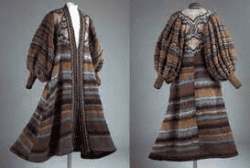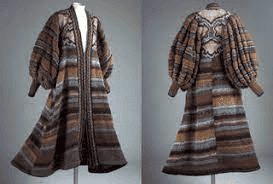Knitting saw a boom in popularity during lockdown, becoming high fashion by 2020. This seems unusual for a hobby still largely associated with the stereotype of an elderly lady, as ridiculous as that may be. It’s an interesting story as to how knitting has gone from a niche craft activity through various rises and falls in popularity.

Early history
Although knitted garments have been documented as far back as the 3rd to 5th century, it’s thought to be much older. The first recorded garment was a pair of socks from Ancient Egypt. The structure of the garments suggested knitting had been around for some time but archaeologists have yet to prove it.
Knitting made its way to Europe in the 14th or 15th century, with knitted garments gaining popularity in the UK. They were worn by sailors, soldiers and labourers for their warmth and weather resistance. Both men and women knitted to create these garments and eventually, the first knitting machine was invented in 1589. It wasn’t until the end of the 19th century that it began to be widely considered an idle hobby engaged in only by the elderly middle classes. Of course, this perception, coloured by societal mores of the time, is far from the full story. Knitting enabled people with limited income to earn money and it’s thought this contributed to the association with the elderly. It was a way to survive in the time before pensions and welfare support existed.
Knitting today
Throughout the 20th century, knitted garments have fallen in and out of fashion with a rise in popularity during the 60s, 90s and more recently in 2020. Of course, most fashion garments are now created via industrial knitting machines but the trends tend to be reflected in the hobby as people seek to create more unique and interesting garments. In recent years, specialists such as woolcouturecompany have seen a rise in sales of knitting kits and yarn.

This may be related to designers and artists engaging in ‘extreme knitting’. This subversive hobby plays on the fact that knitting is still seen as an unskilled domestic hobby. Examples can be seen in the works of Ýr Jóhannsdóttir and some interesting background information is available in this interview.
Extreme knitting artists aim to change the outmoded attitudes towards knitting, bringing the skill and difficulty of the art into the limelight – and so far, it’s working!

